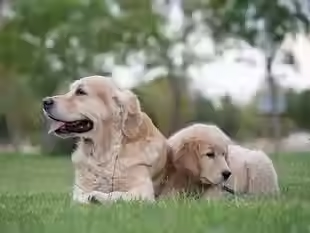

How to Build Food Drive in Your Dog for Effective Training
Sep 11
3 min read
1
5
0

If you’ve ever tried to train your dog and felt like they just weren’t interested in treats, you’re not alone. While some dogs are naturally food-motivated, others need a bit of help developing what’s called food drive—that is, the desire to work for food rewards.
The good news? Food drive can be built. And once your dog is excited to earn food through training, everything from teaching basic obedience to solving behavior issues becomes easier and more effective.
In this post, we’ll break down what food drive is, why it matters, and simple steps you can take to build it—whether your dog is a picky eater or just not “into” training yet.
⸻
What Is Food Drive?
Food drive is your dog’s willingness and enthusiasm to work for food rewards. It’s a form of motivation, just like a paycheck is for a person. A dog with high food drive is eager to learn and pays attention during training because they know a reward is coming.
Some breeds and individuals have naturally high food drive (think Labradors or Beagles), while others are more selective or distracted.
⸻
Why Build Food Drive?
Here’s what strong food drive can help you do:
• Improve focus and engagement during training
• Speed up learning of new skills
• Reward calm behavior in distracting environments
• Create positive associations with training and you as the handler
• Avoid reliance on leash pressure or corrections
Bottom line: A dog that wants to work for you is a joy to train.
⸻
How to Build Food Drive in Your Dog
1. Use Their Meals as Training Time
Stop free-feeding or leaving food out all day. Instead, use your dog’s daily kibble allowance during training sessions.
Example: Ask for a “sit” or “down” before every piece of kibble, building value in working for food.
✅ Why it works: If food only comes through interaction with you, their motivation to engage increases.
2. Increase Value of the Food
If kibble isn’t cutting it, use higher-value treats like:
• Boiled chicken
• Cheese (in moderation)
• Freeze-dried liver
• Commercial training treats
Experiment to see what excites your dog most.
✅ Pro tip: Use high-value food for harder tasks or distractions, and save kibble for easy stuff.
3. Train When They’re a Little Hungry
Train before meals—not after. A slightly hungry dog is naturally more motivated to work for food.
⚠️ Don’t starve your dog. Just adjust your feeding schedule so training happens when they’re most receptive.
4. Make It a Game
Turn training into fun by incorporating movement and energy:
• Toss treats so they chase them
• Use food as a lure for tricks or position changes
• Do “find it” games where they search for scattered kibble
✅ Why it works: Movement activates your dog’s prey drive, making food more exciting.
5. Keep Training Sessions Short and Positive
Avoid long, repetitive sessions. End before your dog gets bored.
2–5 minutes is perfect for beginners. Leave them wanting more.
✅ Dogs remember how a session ends. Keep it upbeat and successful.
6. Use a Marker
Pair food with a clear “marker” like a clicker or the word “Yes!” to help your dog understand exactly what earned the reward.
✅ This builds confidence and increases anticipation for the food.
7. Control the Environment
Start in a quiet, distraction-free space before moving to more stimulating areas. If your dog is too distracted to care about food, you need to lower the difficulty level first.
✅ Build food drive in a controlled space before expecting it outdoors.
⸻
Common Mistakes to Avoid
• Free-feeding or giving too many treats for free – Your dog learns food is always available without effort.
• Using low-value treats in high-distraction areas – You wouldn’t work for pennies in a busy marketplace.
• Training when your dog is full or tired – Timing matters. Use their natural rhythms to your advantage.
⸻
Final Thoughts
Building food drive isn’t about tricking your dog—it’s about teaching them that working with you leads to great things. With a little consistency and creativity, you can turn your dog into a focused, eager training partner who’s excited to learn and bond with you.
Whether you’re raising a new puppy or working with an older dog, food is one of your most powerful training tools—so use it wisely!





